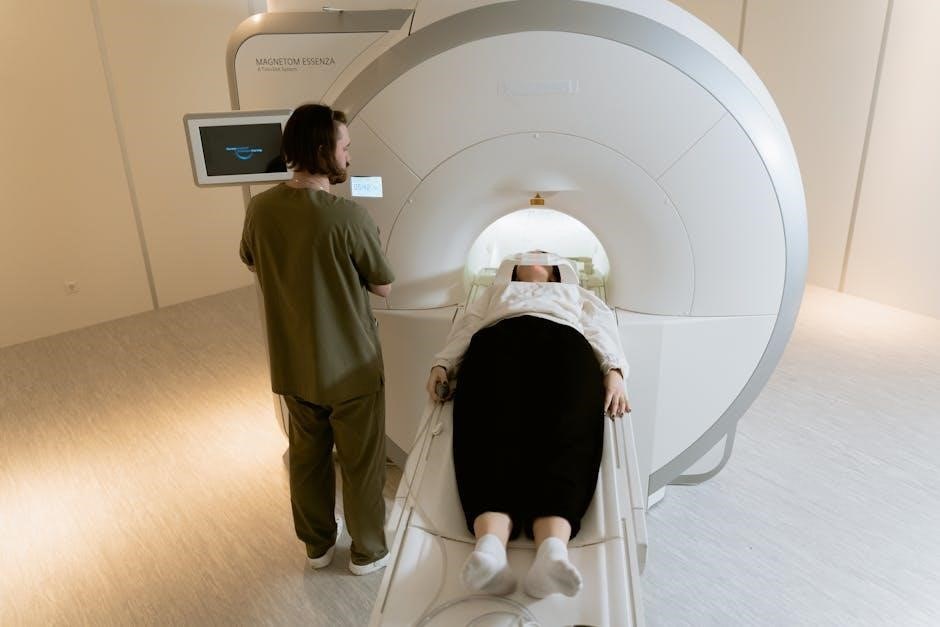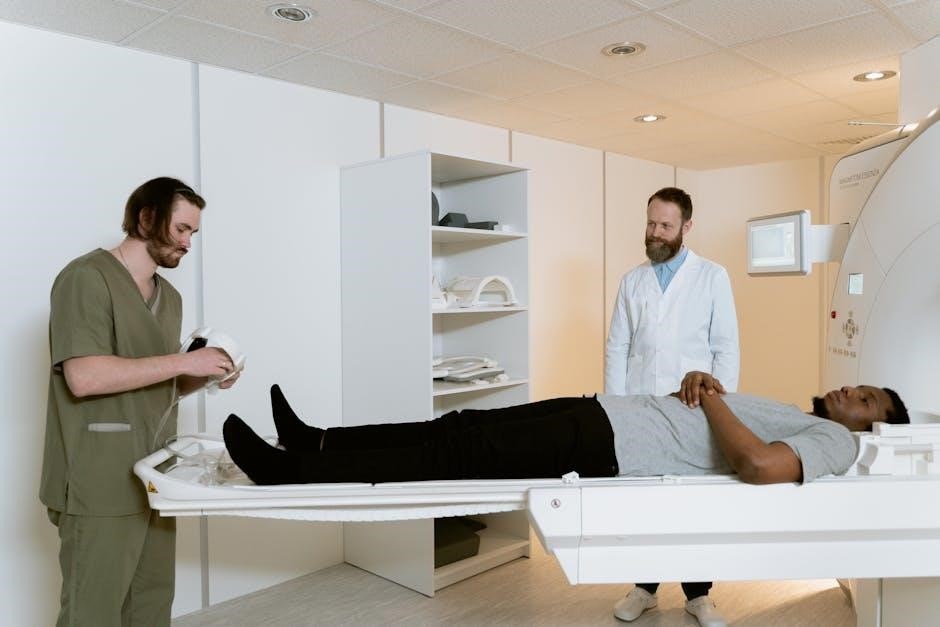
bot-2 assessment pdf
1.1 Overview of the BOT-2 Assessment
The Bruininks-Oseretsky Test of Motor Proficiency, Second Edition (BOT-2), is a comprehensive motor skills assessment tool designed for individuals aged 4 to 21 years. It evaluates fine motor, gross motor, and manual coordination abilities, providing insights into overall motor proficiency. Widely used in occupational therapy and educational settings, the BOT-2 offers a detailed understanding of motor development and is available in both complete and brief forms for flexibility in assessment needs.

The Bruininks-Oseretsky Test of Motor Proficiency, Second Edition (BOT-2), is a widely used motor skills assessment tool designed for individuals aged 4 to 21 years. It evaluates fine motor, gross motor, and manual coordination abilities, providing a comprehensive understanding of motor proficiency. The test includes engaging, goal-directed activities to measure a broad range of motor skills, making it suitable for use in occupational therapy, education, and research. Available in both complete and brief forms, the BOT-2 offers flexibility for different assessment needs, ensuring accurate and reliable results for evaluating motor development in diverse settings.
1.2 Importance of Motor Proficiency Assessment
Assessing motor proficiency is crucial for identifying developmental delays, diagnosing conditions like dyspraxia, and informing intervention strategies. Motor skills are foundational for daily activities, academic performance, and overall independence. The BOT-2 provides a standardized method to evaluate these abilities, ensuring early identification of challenges and guiding targeted support. By measuring fine motor, gross motor, and manual coordination skills, the BOT-2 helps professionals, such as occupational therapists and educators, create personalized plans to enhance motor development. Accurate assessment enables timely interventions, improving long-term outcomes for individuals with motor difficulties, making it an essential tool in both clinical and educational settings.

Structure of the BOT-2 Assessment
The BOT-2 assessment includes fine motor, gross motor, and manual coordination components, with both complete and short forms available. The complete form features 53 items across 8 subtests.
2.1 Components of the BOT-2
The BOT-2 assessment comprises three primary components: fine motor control, gross motor skills, and manual coordination. Each component is further divided into subtests that evaluate specific motor abilities. Fine motor control includes tasks like drawing and manipulating small objects, while gross motor skills assess activities such as running and jumping. Manual coordination involves tests of dexterity and balance. Together, these components provide a comprehensive evaluation of motor proficiency, offering detailed insights into an individual’s motor development and identifying potential areas for improvement or intervention.
2.2 Fine Motor Control Subtests
The BOT-2 includes specific subtests to evaluate fine motor control, focusing on precision and dexterity. These subtests involve tasks such as drawing shapes, tracing lines, and manipulating small objects. For example, the fine motor precision subtest requires the use of writing utensils to complete detailed drawings. Another subtest assesses the ability to fasten buttons or use zippers, reflecting real-world applications of fine motor skills. These tasks are designed to measure hand-eye coordination, finger dexterity, and the ability to perform intricate movements accurately. The results help identify strengths and areas needing improvement in fine motor functioning.
2.3 Gross Motor Skills Subtests
The BOT-2 assesses gross motor skills through subtests that evaluate physical abilities like running, jumping, and balance. These tasks measure coordination, strength, and overall mobility. For instance, the running speed and agility subtest involves navigating obstacle courses, while the balance subtest requires maintaining posture on different surfaces. These activities provide insights into an individual’s ability to perform physical tasks efficiently and safely. The results help identify areas of strength and weakness in gross motor functioning, which are essential for everyday activities and sports participation. This section complements the fine motor and coordination assessments for a holistic evaluation.
2.4 Manual Coordination Subtests
The BOT-2 includes manual coordination subtests that evaluate the ability to use hands and body together for precise movements. Tasks like throwing, catching, and dribbling assess coordination and dexterity. These activities measure how well an individual can integrate hand-eye coordination with physical movements. The subtests are designed to challenge coordination skills progressively, providing insights into motor proficiency. Results from these subtests help identify strengths or areas needing improvement in manual coordination, which are crucial for everyday tasks and physical activities. This section focuses solely on coordination abilities, distinct from fine motor or gross motor skills, offering a targeted assessment of this critical motor component.

Administration of the BOT-2
The BOT-2 is administered individually, using engaging activities to assess motor skills. It requires standardized procedures and trained administrators to ensure accurate and reliable results.
3.1 Preparing for the Assessment
Preparing for the BOT-2 assessment involves reviewing the BOT-2 manual and ensuring all test materials are organized. A quiet, spacious environment is essential to minimize distractions. The administrator must familiarize themselves with the test items, including fine motor, gross motor, and manual coordination tasks. Participants should be informed about the process to reduce anxiety. The BOT-2 scoring manual and guidelines must be readily available for accurate evaluation. Proper preparation ensures the assessment is conducted efficiently and effectively, yielding reliable results for motor proficiency evaluation.

3.2 Steps Involved in Administering the Test
Administering the BOT-2 involves a structured process to ensure accurate results. Begin by greeting the participant and explaining the test purpose. Present each task clearly, starting with fine motor skills like drawing and manipulation. Progress to gross motor activities, such as running and jumping, ensuring safety. Manual coordination tasks, like catching and throwing, follow. Observe and record performance meticulously. Use the scoring manual to rate each subtest. Ensure all items are attempted unless contraindicated. Maintain engagement throughout to optimize results. The process requires patience and adherence to guidelines for reliable outcomes.
3.4 Special Considerations for Different Age Groups
Administering the BOT-2 requires tailoring the approach to the participant’s age. For younger children (4-7 years), use engaging instructions and demonstrations to maintain attention. Ensure tasks are age-appropriate and pace activities to avoid fatigue. For older children and adolescents (8-21 years), provide clear explanations and emphasize the importance of effort. Accommodations, such as extra time or assistive devices, may be necessary for individuals with special needs. Create a quiet, safe environment for physical tasks to minimize distractions. These adjustments ensure accurate and fair assessment of motor skills across all age groups.

Scoring and Interpretation
The BOT-2 uses a standardized scoring system, with raw scores converted to composite scores comparing performance to normative data. This helps identify strengths and areas needing support.
4.1 Understanding the Scoring System
The BOT-2 scoring system involves converting raw scores from each subtest into standardized composite scores. These scores are based on normative data, allowing comparisons to peers. Composite scores are calculated by summing subtest raw scores and converting them using tables in the BOT-2 manual. Standardized scores have a mean of 50 and a standard deviation of 10, with higher scores indicating better motor proficiency. Percentile ranks are also provided to interpret performance relative to the normative sample. Understanding the scoring system is essential for accurate interpretation and identifying areas of strength or concern in motor skills.
4.2 Interpreting Test Results
Interpreting BOT-2 results involves analyzing composite scores and subtest performance. Composite scores are derived from subtests, providing a comprehensive view of motor proficiency. Percentile ranks and standard scores (mean=50, SD=10) help compare individuals to peers. Higher scores indicate better motor skills. Clinicians interpret results to identify strengths, weaknesses, and areas needing intervention. For example, low scores in fine motor precision may suggest difficulties with handwriting. Accurate interpretation requires understanding normative data and individual contexts, ensuring informed decision-making for therapy or educational planning. This step is crucial for tailoring support to meet specific needs effectively.
4.3 Using the BOT-2 Scoring Manual
The BOT-2 Scoring Manual provides detailed instructions for calculating and interpreting test results. It includes guidelines for converting raw scores to standard scores, percentile ranks, and z-scores. The manual offers step-by-step instructions for summing subtest scores and determining composite scores. It also provides normative data for comparison, helping identify if a child’s motor skills are below average, average, or above average. Additionally, the manual includes resources for understanding score interpretation and addressing potential errors in administration. Accurate use of the manual ensures reliable and valid assessment outcomes, supporting informed decision-making for therapy or educational planning.

Applications of the BOT-2
The BOT-2 is widely used in occupational therapy to identify motor skill delays and plan interventions. It aids in educational assessments for developing IEPs and monitoring progress. Additionally, it supports research studies on motor development and proficiency across various populations, making it a versatile tool for both clinical and academic settings.
5.1 Use in Occupational Therapy
The BOT-2 is a valuable tool in occupational therapy for assessing motor skills in individuals with developmental delays or disorders. It helps identify specific challenges in fine motor, gross motor, and manual coordination abilities. Therapists use the test to create targeted intervention plans, addressing areas such as handwriting, mobility, and coordination. The BOT-2 also aids in monitoring progress over time, ensuring therapies are effective. Its comprehensive nature allows for tailored approaches, making it an essential resource for improving motor proficiency and enhancing functional abilities in both children and adolescents.
5.2 Role in Educational Assessments
The BOT-2 plays a significant role in educational assessments by providing insight into students’ motor abilities, which are crucial for academic success. It helps identify motor skill deficits that may impact learning, such as handwriting or coordination challenges. Schools use the BOT-2 to develop Individualized Education Programs (IEPs) and 504 Plans, ensuring tailored support for students with motor difficulties. The assessment also aids in early identification of motor delays, enabling timely interventions. By evaluating fine motor, gross motor, and coordination skills, the BOT-2 supports educators in creating inclusive learning environments and promoting overall student development.
5.3 Application in Research Studies
The BOT-2 is widely utilized in research to assess motor proficiency across diverse populations. Studies have employed the BOT-2 to evaluate motor skills in children with ADHD, CNS tumors, and other developmental conditions. Its structured subtests allow researchers to examine specific motor domains, providing reliable data for analysis. The BOT-2 has also been used in cross-cultural studies to compare motor development across different regions. Its availability in both complete and short forms makes it adaptable for various research designs, ensuring efficient and accurate motor skill assessment in both clinical and normative samples.

Strengths of the BOT-2 Assessment
The BOT-2 excels in providing a comprehensive evaluation of motor skills, covering fine motor, gross motor, and manual coordination. It is notable for its age range flexibility, accommodating individuals from 4 to 21 years, and its strong reliability and validity, ensuring accurate and consistent results. The test’s structured subtests and clear scoring system make it a valuable tool for both clinical and educational settings. Additionally, the availability of both complete and short forms enhances its practicality for various assessment needs, making it a preferred choice among professionals.
6.1 Comprehensive Evaluation of Motor Skills
The BOT-2 provides a thorough assessment of motor skills, encompassing fine motor, gross motor, and manual coordination abilities. It evaluates tasks such as drawing, throwing, and balancing, offering a detailed profile of an individual’s motor proficiency. This comprehensive approach ensures that both subtle and significant motor challenges are identified, making it a robust tool for understanding overall motor development. The test’s structured subtests and clear scoring system allow for precise measurement, enabling professionals to track progress and plan interventions effectively.
6.2 Age Range and Flexibility
The BOT-2 is designed for individuals aged 4 to 21 years, offering a versatile assessment tool across various developmental stages. Its flexibility is evident in its two forms: the complete assessment for detailed evaluation and the brief form for screening or program monitoring. This adaptability makes it suitable for different settings, from schools to clinical environments, allowing professionals to choose the most appropriate version based on specific needs. The BOT-2’s flexibility ensures it remains a practical and convenient option for evaluating motor skills in diverse populations, providing valuable insights into motor development across a wide age spectrum.
6.3 Reliability and Validity
The BOT-2 demonstrates strong reliability and validity, ensuring accurate and consistent measurement of motor skills. Studies confirm high test-retest reliability, indicating stable results across administrations. Its validity is supported by its ability to effectively assess motor proficiency across fine, gross, and coordination domains. The comprehensive structure aligns with theoretical frameworks of motor development, making it a trusted tool for both clinical and educational assessments. Researchers and practitioners rely on its robust psychometric properties to make informed decisions about motor skills development and intervention strategies. This makes the BOT-2 a reliable choice for evaluating motor abilities in diverse populations.

Limitations of the BOT-2
7.1 Time Requirements for Administration
The BOT-2 assessment is time-consuming, requiring up to 60 minutes to complete, which can be challenging for young or less attentive participants, limiting its practicality in some settings.
The BOT-2 assessment requires significant time to administer, typically ranging from 60 to 90 minutes, depending on the individual’s age and motor proficiency level. This lengthy process can be challenging for younger children or those with shorter attention spans, potentially leading to fatigue or decreased engagement. The test includes 53 items across eight subtests, which, while comprehensive, adds to the overall duration. This time commitment can be a limitation in busy clinical or educational settings where time is a constraint. However, the availability of the BOT-2 Brief Form offers a quicker alternative, though it sacrifices some depth in assessment.
7.2 Limited Normative Sample Representation
The BOT-2 normative sample has been criticized for limited representation of diverse populations, particularly in terms of cultural and socioeconomic backgrounds. This raises concerns about the test’s generalizability to all individuals, especially those from underrepresented groups. For instance, children with autism spectrum disorder (ASD) are often excluded from normative samples, potentially leading to biased results when assessing such populations. This limitation underscores the need for cautious interpretation of scores and highlights the importance of supplementing BOT-2 results with additional assessments tailored to specific populations to ensure accurate and fair evaluation of motor proficiency.
7.3 Need for Trained Administrators
The BOT-2 requires administrators to undergo specialized training to ensure accurate and reliable test results. Proper training enables professionals to understand test protocols, manage materials effectively, and interpret scores correctly. Improper administration can lead to inaccurate conclusions about an individual’s motor proficiency. Therefore, only qualified professionals, such as occupational therapists or psychologists, should administer the BOT-2. This ensures the assessment is conducted fairly and consistently, maintaining the test’s validity and reliability; Training resources, including manuals and workshops, are available to support administrators in mastering the BOT-2 assessment process.

Resources and References
Key resources include the BOT-2 manual, scoring guides, and PDF materials for detailed administration and interpretation. Research studies and literature provide evidence-based insights and validation of the assessment tool;
8.1 BOT-2 Manual and Scoring Guides
The BOT-2 manual and scoring guides are essential resources for administering and interpreting the assessment. They provide detailed instructions for evaluating motor skills, ensuring accurate results. The manual includes comprehensive scoring criteria, sample forms, and guidelines for understanding motor proficiency. Additionally, PDF materials and supplementary downloads are available, offering convenient access to scoring templates and administration procedures. These resources are vital for professionals to ensure reliable and valid assessments, making the BOT-2 a robust tool for evaluating motor skills in diverse settings.
8.2 Available PDF Materials
A variety of BOT-2 PDF materials are accessible online, including the BOT-2 scoring manual, assessment guides, and answer sheets. These resources provide detailed instructions for administering and interpreting the test. Additionally, research studies and literature reviews in PDF format offer insights into the test’s validity and applications. Many academic databases and occupational therapy websites host these materials, allowing professionals to download and utilize them effectively. These PDFs are invaluable for ensuring accurate assessments and staying updated on the latest developments in motor proficiency evaluation.
8.3 Research Studies and Literature
Extensive research supports the BOT-2 as a reliable tool for assessing motor proficiency. Studies have used the BOT-2 to evaluate motor skills in children with ADHD, ASD, and other developmental conditions. Literature highlights its validity in cross-cultural applications, such as in the Czech Republic, where it was adapted for local norms. Research also explores its use in occupational therapy and educational settings, demonstrating its effectiveness in identifying motor delays. The BOT-2 has been validated through numerous studies, ensuring its reliability for diverse populations and age groups, making it a trusted resource for clinicians and researchers worldwide.
The BOT-2 assessment is a widely recognized, reliable tool for evaluating motor proficiency, offering comprehensive insights into fine, gross, and manual coordination skills. Its adaptability across ages and settings makes it invaluable for clinicians and educators, providing a clear framework for diagnosing and guiding interventions to support motor development in diverse populations.
9.1 Summary of Key Points
The BOT-2 assessment is a comprehensive tool for evaluating motor proficiency in individuals aged 4 to 21, focusing on fine motor, gross motor, and manual coordination skills. It is widely used in occupational therapy and educational settings to identify motor difficulties and guide interventions. The test is available in both complete and brief forms, offering flexibility for different assessment needs. Its structured subtests and clear scoring system provide reliable and valid results, making it a valuable resource for understanding motor development and supporting individuals with motor challenges.
9.2 Final Thoughts on the BOT-2 Assessment
The BOT-2 assessment is a comprehensive tool for evaluating motor proficiency in individuals aged 4 to 21, focusing on fine motor, gross motor, and manual coordination skills. It is widely used in occupational therapy and educational settings to identify motor difficulties and guide interventions. The test is available in both complete and brief forms, offering flexibility for different assessment needs. Its structured subtests and clear scoring system provide reliable and valid results, making it a valuable resource for understanding motor development and supporting individuals with motor challenges.
Related posts:
Archives
Calendar
| M | T | W | T | F | S | S |
|---|---|---|---|---|---|---|
| 1 | 2 | |||||
| 3 | 4 | 5 | 6 | 7 | 8 | 9 |
| 10 | 11 | 12 | 13 | 14 | 15 | 16 |
| 17 | 18 | 19 | 20 | 21 | 22 | 23 |
| 24 | 25 | 26 | 27 | 28 | 29 | 30 |
Leave a Reply
You must be logged in to post a comment.